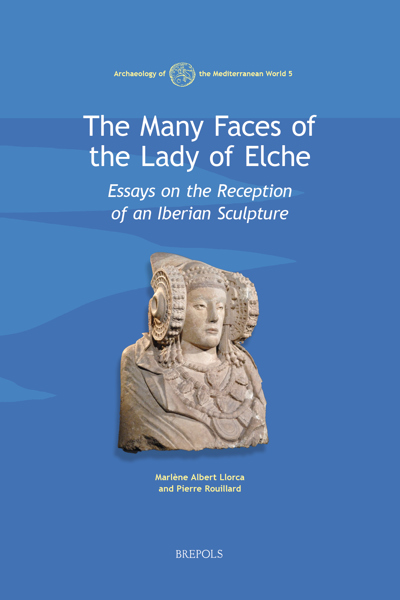
New Approaches to the Materiality of Text in the Ancient Mediterranean
From Monuments and Buildings to Small Portable Objects
Erica Angliker, Ilaria Bultrighini (eds)
- Pages: 262 p.
- Size:216 x 280 mm
- Illustrations:119 b/w, 18 col., 1 maps b/w
- Language(s):English
- Publication Year:2023
- € 115,00 EXCL. VAT RETAIL PRICE
- ISBN: 978-2-503-60156-4
- Paperback
- Available
- € 115,00 EXCL. VAT RETAIL PRICE
- ISBN: 978-2-503-60157-1
- E-book
- Available
“Finally, we would like to underline the high quality of this volume, and its extensive illustrations (as witnessed by the impressive list of illustrations, (…).” (Antoine Chabod, in Bryn Mawr Classical Review, 2024.04.26)
“In conclusion, this collection of works is a welcome addition to scholarship on the materiality of inscribed texts and is certainly a must-read for scholars interested in this topic, destined, as it is, to elicit further discussion and analysis of the many issues and case studies it explores.” (Cristina Carusi, in Scripta Classica Israelica, XLIII, 2024, p. 255))
"Insgesamt bietet diese breit gefächerte Sammlung genug Stoff, um über Themen nachzudenken, die in der Epigraphik und allgemeiner in den Altertumswissenschaften gegenwärtig intensiv debattiert werden (...)" (Sara Chiarini, in Sehepunkte, 24, 2024)
« (...) les new approaches présentées dans ce volume reflètent de manière évidente l’impact des nouveaux questionnements consacrés aux aspects matériels des textes anciens sur le renouvellement des approches disciplinaires elles-mêmes. Les différentes contributions en attestent la vitalité et l’importance à l’échelle transdisciplinaire. » (Anaïs Michel Karvoni, dans Revue archéologique, 2025/1, p. 366)
Erica Angliker (PhD University of Zurich, 2017). Scientific member at the excavations of the sanctuary of Despotiko (Cyclades, Greece). Research Associate, Institute of Advanced Studies-Unicamp.
Ilaria Bultrighini (PhD G. d’Annunzio University of Chieti-Pescara, 2012). Honorary Research Fellow, Department of Hebrew and Jewish Studies, University College London.
In recent years, the study of epigraphy and ancient writings has undergone a ‘material turn’, as scholars have increasingly looked beyond just the contents of written sources to also focus on their broader material and visual contexts as a way of exploring the layers of different meanings that can attach to written evidence. Taking this interdisciplinary approach as its starting point, this volume draws together contributions from specialists in different fields in order to analyze text-bearing objects and monuments from across the ancient Mediterranean world.
From texts inscribed on large stone monuments and buildings, clay, or metal tablets, to writings on papyrus and parchment rolls, jewellery, vases, coins, and textiles, writing on different materials had manifold possibilities. The case studies gathered here examine novel approaches to the creation and display of inscribed objects, as well as to the ways in which such items were approached and perceived by people during a chronological period ranging from the Late Bronze Age to Late Antiquity. In doing so, the volume sheds new light not only on the interplay between ancient texts, text-bearers, and viewers within their wider spatial and physical contexts, but also on the possibilities opened by exploring the material aspects of writing through interdisciplinary approaches.
List of Illustrations
List of Abbreviations
1. Introduction. The Material Turn in the Study of Ancient Texts
Erica Angliker and Ilaria Bultrighini
I. Texts on Portable Objects – Tablets, Vases, Ostraca, and the Inscribing Hand
2. A Comparative Approach to Methods of Inscribing Clay Tablets. Interaction and Innovation in Cyprus and Ugarit
Philippa M. Steele and Philip J. Boyes
3. The Brygos Painter’s Miswritten Signature on the Lancastre pelike
Gilberto Da Silva Francisco
4. A Lesson in a Desert Quarry. A Material Approach to a School Ostracon
Julia Lougovaya
II. Texts on Portable Objects – Coins, Rolls, Codices, and the Authoritativeness of Texts
5. Inspecto nummo…The Materiality of Coin Imagery and Inscriptions in the Roman World
Dario Calomino
6. What is a Book? The Ideology of Materiality in Ancient Greek and Roman Writing Technology
Nicola Reggiani
III. Texts on Monuments and Buildings – Spaces and Contexts of Ancient Inscriptions
7. Women in Trouble, and the Habit of Objectifying a Text in the So-Called Confession Inscriptions
Irene Salvo
8. Epigraphy and the Power of Precedence in Asia Minor
Naomi Carless Unwin
IV. Texts that Move Through Media – Body and Text
9. Inscribed Materialities. Greek Curse Tablets
Jessica Lamont
10. Formulating Faith on Objects and Buildings. The ‘Light, Life’ Formula in Late Antiquity
Sean V. Leatherbury
11. ‘And the Word Was Made flesh’. Greek and Aramaic Inscriptions as Substitutes for the Physical Presence of Benefactors in Eastern Christian Sanctuaries
Paweł Nowakowski
V. Texts that Move through Media – Greek Literary and Inscriptional Epigram
12. Elegy, Epigram, and the Complementarity of Text and Monument
Joseph W. Day
13. From Courtesans, to Goddesses. The Materialization of Ritual Practice in Nossis’s Votive Epigrams
Sherry (Chiayi) Lee
14. Strategies of Ocular and Imaginary Deixis in Greek Epigrams
Federica Scicolone
15. Afterword
Michael Squire
Index




